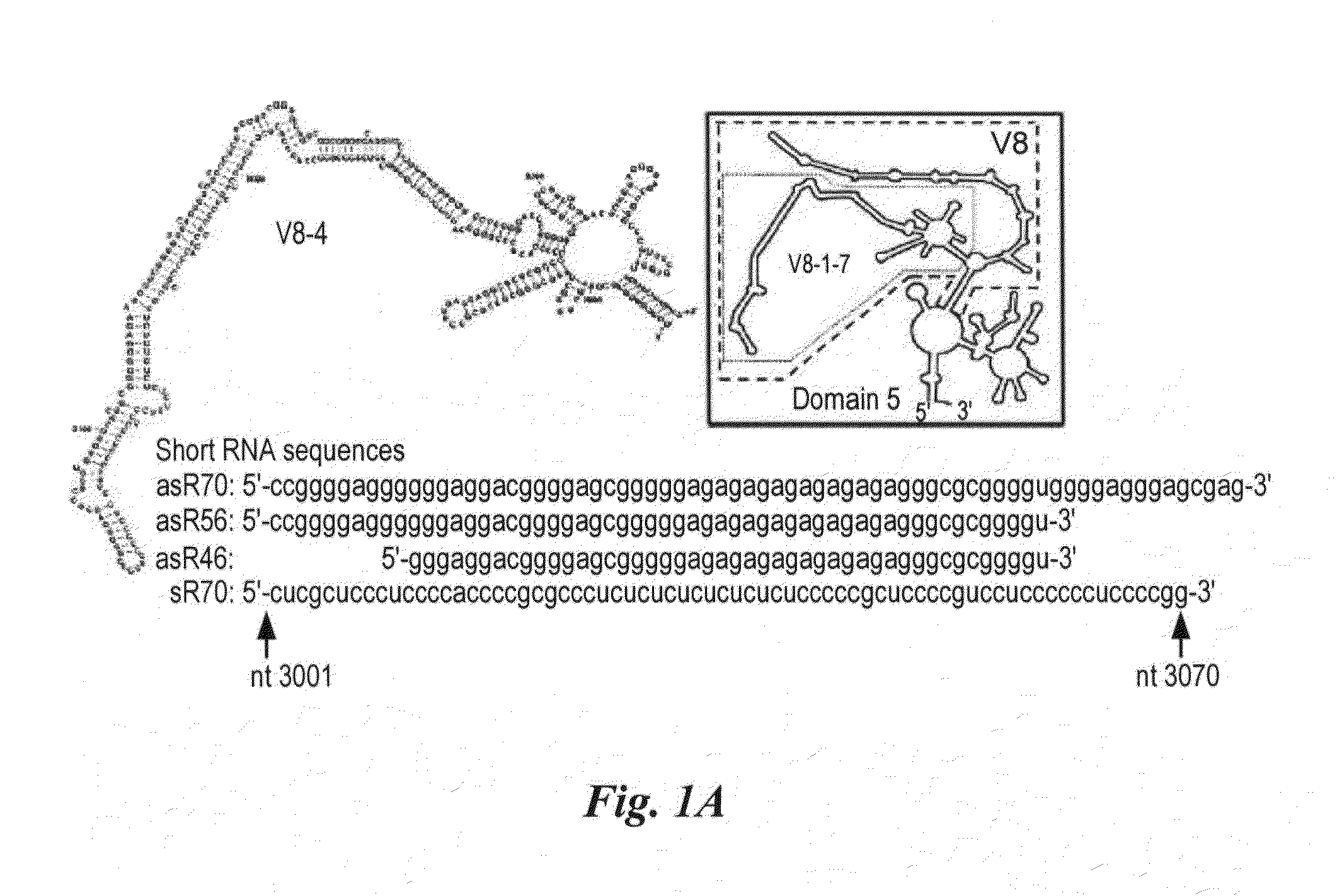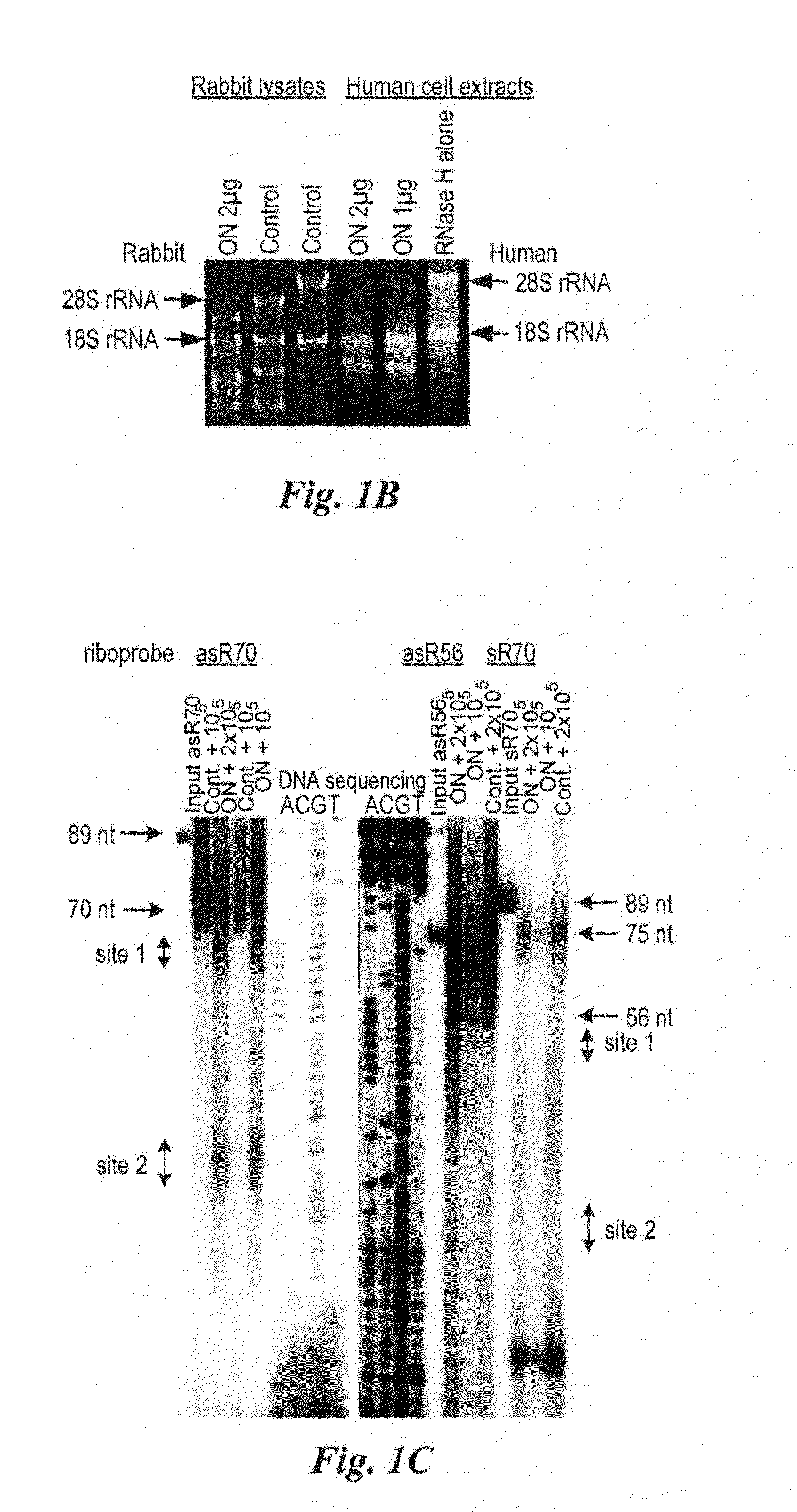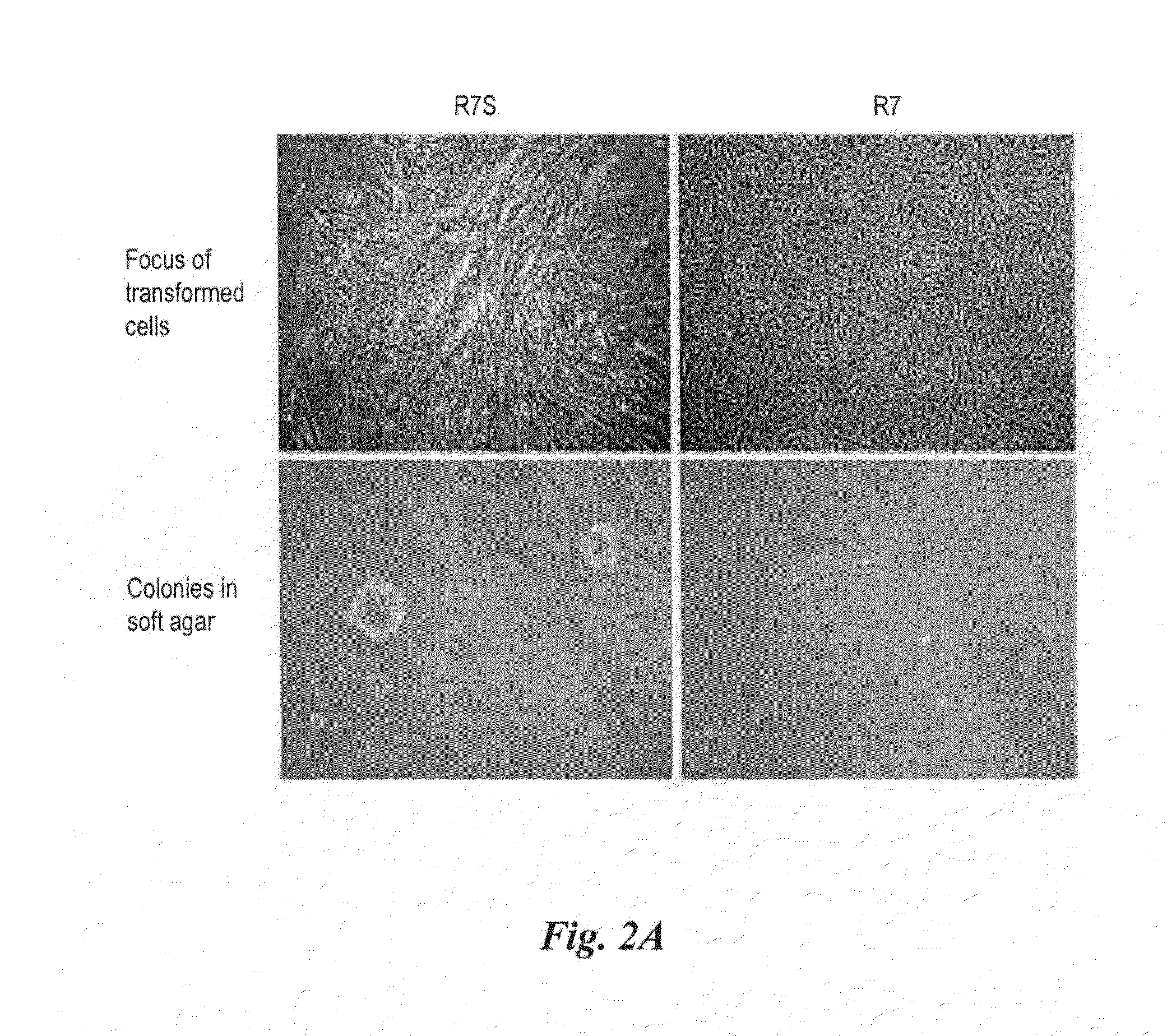Method for preparing human neoplastically transformed cells
a neoplastically transformed cell and neoplastic technology, applied in the field of preparing human neoplastically transformed cells, can solve the problem that the above-mentioned tr cannot be induced into neoplastically transformed cells, and achieve the effect of potent neoplastically transforming ability and safe induced
- Summary
- Abstract
- Description
- Claims
- Application Information
AI Technical Summary
Benefits of technology
Problems solved by technology
Method used
Image
Examples
reference example 1
Binding Properties of ggagaggaa Sequence (SEQ ID NO: 3)
[0053]To 10 μL of a rabbit lysate or 20 μL of a human-derived cell extract was added a polypurine sequence ggagaggaa (SEQ ID NO: 3), a partial nucleotide sequence of transforming RNA (TR), and allowed to react in the presence of RNase H. Thereafter, total RNA was collected and electrophoresed on polyacrylamide gel. The results are shown in FIG. 1-b. As a result, it can be seen that the ggagaggaa sequence (SEQ ID NO: 3) is bound to 28S rRNA.
reference example 2
Binding Properties of asR70, asR56, and sR70
[0054]The binding properties of asR70, asR56, and sR70 were assessed in accordance with the following method. The results are shown in FIG. 1-c. Concretely, first, plasmids pG-asR70, pG-asR56, and pG-sR70 were prepared by insertions thereof into a plasmid pGEM3 (manufactured by Promega) cleaved with HindIII-XbaI, and labeled RNA probes (riboprobes) of asR70, asR56, and sR70 were produced from the plasmids obtained using SP6 RNA polymerase (manufactured by Takara Bio Inc.) and [α-32P]-GTP (manufactured by Perkin-Elmer). The probes obtained were electrophoresed on polyacrylamide gel, and as a result, the asR70 probe had a length of 89 nucleotides (first lane from left), the asR56 probe had a length of 75 nucleotides (eighth lane from right), and the sR70 probe had a length of 89 nucleotides (fourth lane from right).
[0055]Next, 20 μL of the human cell lysate and 4 μg of an oligodeoxynucleotide ggagaggaa (SEQ ID NO: 3) were mixed, and cleaved ...
example 1
Morphologies and Neoplastic Transformation of Transformed Cells
[0057]Cell morphologies were observed with a phase contrast microscope for MJ90 cells transformed with hTERT, asR70, and SV40ST (hTERT+asR70+SV40ST, also simply R7S), and MJ90 cells transformed with hTERT and asR70 (hTERT+asR70, also simply R7). In addition, a colony formation test was also conducted in a soft agar medium. The results are shown in FIG. 2-a.
[0058]Here, the transformed cells prepared in the following manner were used. Concretely, pGEM3 (manufactured by Promega) inserted with asR70 was cleaved with HindIII-EcoRI, and a fragment obtained was inserted into pLPCX (manufactured by Clontech) to prepare a vector named pLPCX-asR70. Also, an SV40ST fragment amplified by PCR was inserted into pLHCX (manufactured by Clontech) to prepare a vector named pLHCX-ST. As the plasmids for hTERT expression, pcDNAhTERTn2 (provided by Dr. F. Ishikawa) and pBABE-neo-hTERT (Addgene plasmid 1774) were used. Next, 293T cells (obta...
PUM
| Property | Measurement | Unit |
|---|---|---|
| Fraction | aaaaa | aaaaa |
| Electrical conductance | aaaaa | aaaaa |
| Efficiency | aaaaa | aaaaa |
Abstract
Description
Claims
Application Information
 Login to View More
Login to View More - R&D
- Intellectual Property
- Life Sciences
- Materials
- Tech Scout
- Unparalleled Data Quality
- Higher Quality Content
- 60% Fewer Hallucinations
Browse by: Latest US Patents, China's latest patents, Technical Efficacy Thesaurus, Application Domain, Technology Topic, Popular Technical Reports.
© 2025 PatSnap. All rights reserved.Legal|Privacy policy|Modern Slavery Act Transparency Statement|Sitemap|About US| Contact US: help@patsnap.com



